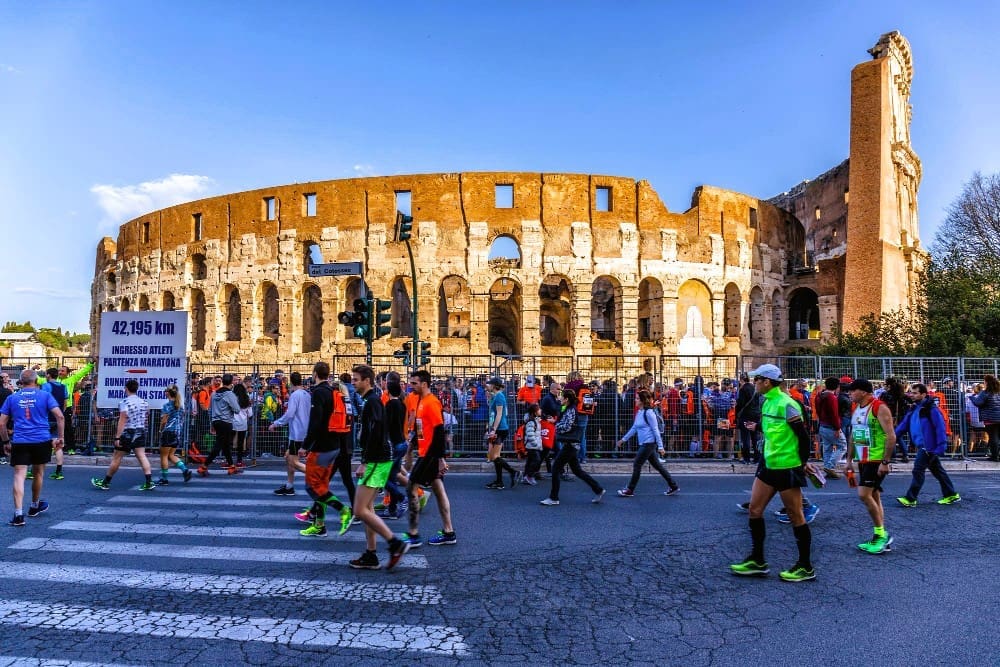The Run Rome the Marathon, an internationally acclaimed race held annually in March, offers runners a unique opportunity to race through the heart of the Eternal City. This major event, which includes both a full marathon and a shorter fun run, draws thousands of participants from around the globe. Runners traverse a famously flat and fast course that winds past iconic ancient landmarks, making it a premier destination race for those seeking a personal best against a backdrop of unparalleled history and culture.
A Journey Through History
Few marathons in the world can rival the historical significance and sheer visual splendor of the Rome course. The route is meticulously designed not just as a race, but as a moving tour through millennia of human achievement, transforming 42.195 kilometers into an unforgettable athletic pilgrimage.
Start and Finish Among Legends
The race begins and ends on the Via dei Fori Imperiali, placing runners directly in the shadow of the colossal Colosseum. This epic starting line sets an awe-inspiring tone, as participants gather where gladiators and emperors once walked, ready to embark on their own modern-day conquest.
The energy at the start is electric, amplified by the historical weight of the surroundings. Crossing the finish line with the Colosseum in view provides a powerful, emotional conclusion to a challenging and rewarding journey.
An Open-Air Museum on the Run
The course is a veritable highlight reel of Rome’s most famous sites. Runners will pass the grand Piazza di Spagna, hear the distant rush of the Trevi Fountain, and catch a glimpse of the architectural marvel that is the Pantheon. One of the most breathtaking moments is running through St. Peter’s Square, offering a stunning view of the Vatican.
This unique characteristic makes the race feel like a sightseeing tour at marathon pace. Every few kilometers reveals another world-renowned monument, providing constant motivation and a profound sense of place that is rare in endurance sports.
The Challenge of the Cobblestones
While Rome is famously known as the “City of Seven Hills,” the marathon course is surprisingly flat, making it a popular choice for runners aiming for a personal record. However, the route presents a unique challenge in the form of its historic cobblestones, known locally as sampietrini.
These uneven, stone-paved sections demand focus and can be taxing on the legs, especially in the later stages of the race. Proper training on varied surfaces and cushioned footwear are highly recommended to prepare for this distinctive feature of the Roman running experience.
More Than Just a Marathon
The Run Rome the Marathon is a weekend-long celebration of running that extends far beyond the main event. Its organization and atmosphere are designed to be inclusive, creating a festive environment for elite athletes, amateur runners, and their families.
Race Day Atmosphere
The support from spectators along the course is famously enthusiastic, with crowds cheering on runners through every neighborhood. The experience is further enhanced by unique touches, such as actors dressed as Roman gladiators greeting finishers, which adds to the memorable and festive character of the day.
This vibrant atmosphere, combined with the historic setting, creates a race day experience that is both inspiring and deeply enjoyable for all participants.
The Fun Run
To ensure the weekend is accessible to everyone, organizers also host a non-competitive Fun Run. This shorter-distance event allows friends, families, and casual runners to participate in the excitement and experience the magic of running in Rome without committing to the full marathon distance.
Preparing for the Eternal City
Participating in an international marathon requires careful planning, and the Run Rome the Marathon is no exception. From registration requirements to course-specific training, a little preparation goes a long way in ensuring a smooth and successful race experience.
Registration and Medical Requirements
Registration for this popular event opens months in advance and can sell out quickly. International runners should be aware that Italian athletic regulations, governed by FIDAL (the Italian Athletics Federation), require participants to provide a valid medical certificate signed by a doctor.
Alternatively, runners can purchase a RUNCARD, an option that provides the necessary insurance and affiliation to compete. It is crucial to review these requirements on the official race website and prepare the necessary documentation well ahead of time.
Training for Rome’s Unique Course
While the course’s flat profile is ideal for speed, specific training is essential to handle the cobblestone sections. Runners should incorporate workouts on uneven or rougher surfaces to build ankle stability and condition their leg muscles for the impact.
Focusing on consistent pacing and maintaining form on these challenging segments will be key to conserving energy and achieving your race day goals.
The Rome Marathon stands out as a once-in-a-lifetime event, seamlessly blending the pursuit of athletic achievement with a deep dive into history. It offers not just a race, but a profound experience, leaving runners with a finisher’s medal and memories of conquering one of the world’s most beautiful and historic cities on foot.








